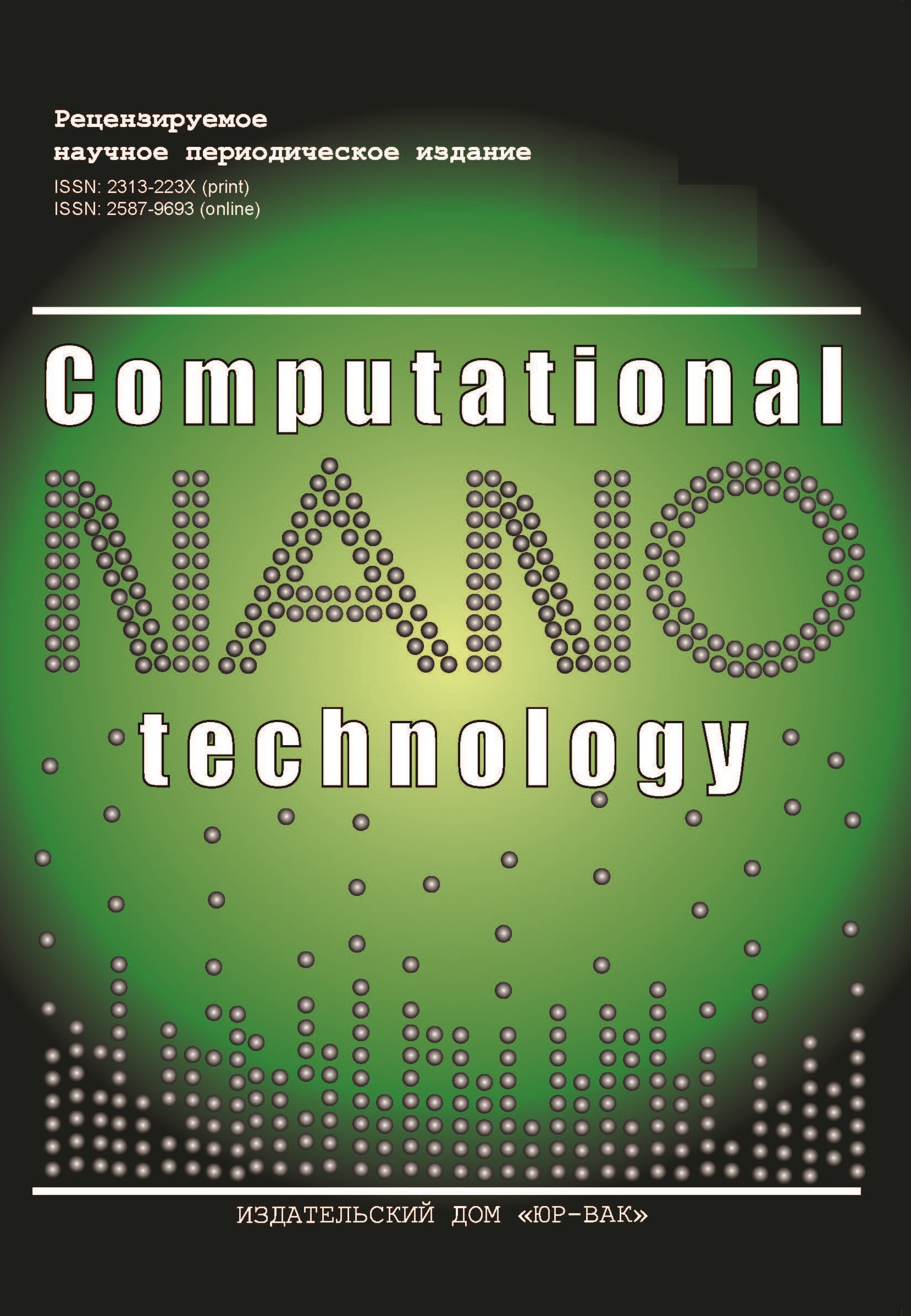Software and Hardware Complex for Investigation of Technical Channels of Information Leakage Based on High-frequency Irradiation Method
- Authors: Porkhun A.S.1, Dushkin A.V.1,2, Meshcheryakov R.V.3, Savchenko Y.V.4, Shcherbakov V.A.1
-
Affiliations:
- National Research University of Electronic Technology
- MIREA - Russian Technological University
- Institute of Control Problems named after V.A. Trapeznikov RAS
- Institute of Microdevices and Control Systems named after L.N. Presnukhina of the National Research University of Electronic Technology
- Issue: Vol 9, No 4 (2022)
- Pages: 55-62
- Section: Articles
- URL: https://journals.eco-vector.com/2313-223X/article/view/529878
- DOI: https://doi.org/10.33693/2313-223X-2022-9-4-55-62
- ID: 529878
Cite item
Abstract
Full Text
About the authors
Anatoly S. Porkhun
National Research University of Electronic Technology
Email: tolik.porkhun@mail.ru
postgraduate student; engineer of information security at the Department of Information Security Moscow, Russian Federation; Zelenograd, Russian Federation
Alexander V. Dushkin
National Research University of Electronic Technology; MIREA - Russian Technological University
Email: a_dushkin@mail.ru
Dr. Sci. (Eng.), Associate Professor; Professor at the Department; Professor at the Department KB-3 «Security of Software Solutions» Moscow, Russian Federation; Zelenograd, Russian Federation
Roman V. Meshcheryakov
Institute of Control Problems named after V.A. Trapeznikov RAS
Email: meshcheryakov.roman@gmail.com
Dr. Sci. (Eng.), Professor; Head of the Laboratory Moscow, Russian Federation
Yury V. Savchenko
Institute of Microdevices and Control Systems named after L.N. Presnukhina of the National Research University of Electronic TechnologyDr. Sci. (Eng.), Professor; Professor Moscow, Russian Federation; Zelenograd, Russian Federation
Vitaly A. Shcherbakov
National Research University of Electronic Technology
Email: svasvarog@yandex.ru
Dr. Sci. (Eng.), Associate Professor; Professor at the Department Moscow, Russian Federation; Zelenograd, Russian Federation
References
- Magomedov Sh.G. Assessment of the degree of influence of related factors on information security indicators // Russian Technological Journal. 2017. No. 5 (2). Pp. 47-56. URL: https://doi.org/10.32362/2500-316X-2017-5-2-47-56
- Porsev I.S., Melshiyan M.A., Dushkin A.V. Analysis and control of the effectiveness of information protection against leakage through technical channels based on probabilistic assessment // Conference of Russian Young Researchers in Electrical and Electronic Engineering (ElConRus). 2022. Pp. 398-401. doi: 10.1109/ElConRus54750.2022.9755623.
- Goncharov N., Dushkin A., Goncharov I. Mathematical modeling of the security management process of an information system in conditions of unauthorized external influences // 1st International Conference on Control Systems, Mathematical Modelling, Automation and Energy Efficiency (SUMMA), 20-22.11.2019. Lipetsk, Russia. IEEE. 2020. Pp. 77-82. doi: 10.1109/SUMMA48161.2019.8947513.
- Noev A., Dushkin A., Sumin V. Mathematical model for managing the dynamics of the development of information conflict in information systems // 1st International Conference on Control Systems, Mathematical Modelling, Automation and Energy Efficiency (SUMMA), 20-22.11.2019. Lipetsk, Russia. IEEE. 2020. Pp. 88-93. doi: 10.1109/SUMMA48161.2019.8947546.
- Isaev O.V., Grechushkina A.Yu., Dushkin A.V., Zolnikov V.K. et al. Analysis of the sustainability of the functioning of the information structure of the integrated security system under negative impacts. Industrial ACS and Controllers. 2017. No. 10. Pp. 52-60. (In Rus.)
- Kasatkina T.I., Rossikhina L.V., Dushkin A.V. et al. Application of neural networks technology in the security subsystem of information systems. Devices and Systems. Management, Control, Diagnostics. 2019. No. 6. Pp. 31-38. (In Rus.)
- Lysov A.V. Electromagnetic sounding of acoustically excited objects (radar systems of acoustic reconnaissance). St. Petersburg: Media Paper, 2020. 678 p.
- The Thing. The Great Seal Bug // Crypto Museum. URL: https://www.cryptomuseum.com/covert/bugs/thing/index.htm (data of accesses: 21.10.2022).
- SRT-56 // Crypto Museum. URL: https://www.cryptomuseum.com/covert/bugs/ec/srt56/index.htm (data of accesses: 21.10.2022).
- EASYCHAIR // Crypto Museum. URL: https://www.cryptomuseum.com/covert/bugs/ec/ (data of accesses: 21.10.2022).
- LOUDAUTO // Crypto Museum. URL: https://www.cryptomuseum.com/covert/bugs/nsaant/loudauto/index.htm (data of accesses: 21.10.2022).
- SATYR // Crypto Museum. URL: https://www.cryptomuseum.com/covert/bugs/satyr/index.htm (data of accesses: 21.10.2022).
- SRT-52 // Crypto Museum. URL: https://www.cryptomuseum.com/covert/bugs/ec/srt52/index.htm (data of accesses: 21.10.2022).
- Pulsed Cavity. Resonant cavity microphone // Crypto Museum. URL: https://www.cryptomuseum.com/covert/bugs/ec/cavity/index.htm (data of accesses: 21.10.2022).
- Gromov Yu.Yu., Shatskikh V.V., Provotorov A.A. et al. Program for radio monitoring and identification of radio signals “SDRPRO”. Certificate of registration of the computer program No. 2022612861, 03.01.2022. Application No. 2022611806 10.02.2022.
- Semenyuk A.V., Sychev I.V., Alferov Yu.V. et al. Ensuring information security through the analysis of the electronic environment of an unmanned aerial vehicle using the software of the SDR receiver. Proceedings of the International Symposium “Reliability and Quality”. 2020. Vol. 1. Pp. 104-108.
- Efremova A.E., Parashchinets A.V., Melikhov S.V. Software-defined radio (Software-defined radio, SDR). The principle of developing a high-frequency linear path. Approbation. 2019. No. 12 (39). Pp. 27-30. (In Rus.)
- Ryabov I.V., Tolmachev S.V., Lebedeva A.A. Principles of software-defined radio systems and their application in the framework of the problem of studying meteor radio communications. Modern Science-intensive Technologies. 2019. No. 7-1. Pp. 59-66. (In Rus.)
- Rudnev A.N. Improving the noise immunity of a direct spread spectrum system with a modified FM-4 with a shift. Industrial ACS and Controllers. 2022. No. 1. Pp. 8-11. (In Rus.) doi: 10.25791/asu.1.2022.1337.
- Kulikov G.V., Do Ch., Samokhina E.V. Optimal nonlinear filtering of M-PM signals against the background of harmonic interference with a random initial phase // Russian Technological Journal. 2021. No. 9 (6). Pp. 46-56. URL: https://doi.org/10.32362/2500-316X-2021-9-6-46-56.
Supplementary files









